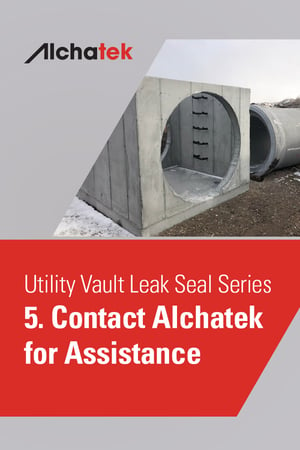
 Choosing the right contractor for slab stabilization and leveling work in a warehouse or distribution center is a decision that carries significant weight. The quality of the repair work not only affects the immediate operational efficiency but also has long-term implications for safety, equipment longevity, and overall maintenance costs. A poor choice can lead to subpar work, requiring additional repairs and causing more operational disruptions. On the other hand, a skilled contractor can efficiently resolve floor issues, minimizing downtime and maximizing the lifespan of the repair.
Choosing the right contractor for slab stabilization and leveling work in a warehouse or distribution center is a decision that carries significant weight. The quality of the repair work not only affects the immediate operational efficiency but also has long-term implications for safety, equipment longevity, and overall maintenance costs. A poor choice can lead to subpar work, requiring additional repairs and causing more operational disruptions. On the other hand, a skilled contractor can efficiently resolve floor issues, minimizing downtime and maximizing the lifespan of the repair.
Criteria for Contractor Selection
When it comes to selecting a contractor for floor repairs, particularly those involving polyurethane foam applications, several criteria should be considered:
- Experience and Expertise: Look for contractors who specialize in industrial floor repairs and have specific experience with polyurethane foam. This ensures that they have the necessary skills and knowledge to complete the job effectively.
- Safety Record: A contractor's safety record is a crucial factor. A strong safety record indicates a higher likelihood of the job being completed without incidents, which is particularly important in a busy warehouse environment.
- References and Reviews: Ask for and check references. Speak to other warehouse managers who have used the contractor's services. Online reviews and testimonials can also provide valuable insights into the contractor's reliability and quality of work.
- Cost and Time Estimates: While cost is undoubtedly an important factor, it should not be the sole criterion for selection. A low bid may be tempting but could result in subpar work. Similarly, overly optimistic time estimates could indicate a lack of understanding of the project's complexity.
Questions for Vetting Contractors
When vetting potential contractors, asking the right questions can provide valuable insights into their suitability for the project. Here are some questions to consider:
- How many years have you been specializing in industrial floor repairs?
- Do you have experience with polyurethane foam applications?
- Can you provide references for similar projects?
- Can you provide a detailed cost and time estimate for the project?
Actionable Advice for Managers
- Due Diligence: Don't rush the contractor selection process. Take the time to do thorough research, including checking references and verifying credentials.
- Site Visits: If possible, arrange for contractors to visit the site. This enables them to provide more accurate estimates and allows you to gauge their professionalism and expertise firsthand.
- Ongoing Communication: Maintain open lines of communication with the contractor throughout the project. Regular updates can help prevent any issues and ensure that the project stays on track.
- Post-Completion Review: After the project is completed, conduct a thorough review of the work. Check for any issues that may need to be addressed and ensure that all obligations have been met before making the final payment.
Choosing the right contractor for polyurethane foam floor repairs is a complex task that requires careful planning, thorough vetting, and meticulous attention to detail. By following these guidelines, warehouse managers can make informed decisions that result in high-quality, long-lasting repairs.



 In the fast-paced environment of a warehouse or distribution center, safety is a paramount concern. One often overlooked factor that can significantly impact safety is the condition of the floor. Uneven or unstable floors can create hazards that put employees at risk. Tripping, slipping, and falling are just a few of the accidents that can occur when floors are in poor condition. Additionally, material-handling equipment like forklifts can tip over or lose control, leading to more severe accidents or even fatalities.
In the fast-paced environment of a warehouse or distribution center, safety is a paramount concern. One often overlooked factor that can significantly impact safety is the condition of the floor. Uneven or unstable floors can create hazards that put employees at risk. Tripping, slipping, and falling are just a few of the accidents that can occur when floors are in poor condition. Additionally, material-handling equipment like forklifts can tip over or lose control, leading to more severe accidents or even fatalities.
 In a warehouse or distribution center, the condition of the floor can have a direct impact on the lifespan of material-handling equipment like forklifts, pallet jacks, and conveyors. Uneven or unstable floors can cause excessive wear and tear on these machines, leading to frequent breakdowns and increased maintenance costs. Over time, this can significantly reduce the lifespan of expensive equipment, necessitating premature replacements and adding to operational costs.
In a warehouse or distribution center, the condition of the floor can have a direct impact on the lifespan of material-handling equipment like forklifts, pallet jacks, and conveyors. Uneven or unstable floors can cause excessive wear and tear on these machines, leading to frequent breakdowns and increased maintenance costs. Over time, this can significantly reduce the lifespan of expensive equipment, necessitating premature replacements and adding to operational costs.
 Operational downtime in a warehouse setting has far-reaching consequences that go beyond the immediate financial losses. When a warehouse floor requires repair, the disruption to the supply chain can be significant. Suppliers and customers alike feel the impact of delays, and the ripple effect can damage relationships and erode trust. Additionally, downtime affects employee productivity and morale, leading to a potential decrease in work quality and an increase in turnover rates. In a just-in-time supply chain, even a brief period of downtime can result in stockouts at retail locations, leading to lost sales and damaged customer relationships.
Operational downtime in a warehouse setting has far-reaching consequences that go beyond the immediate financial losses. When a warehouse floor requires repair, the disruption to the supply chain can be significant. Suppliers and customers alike feel the impact of delays, and the ripple effect can damage relationships and erode trust. Additionally, downtime affects employee productivity and morale, leading to a potential decrease in work quality and an increase in turnover rates. In a just-in-time supply chain, even a brief period of downtime can result in stockouts at retail locations, leading to lost sales and damaged customer relationships.
 Kyle, a seasoned sales leader, boasts a rich tapestry of diverse sales experience spanning various industries. His journey into the realm of leadership began with a distinguished tenure in the US Army and US Marine Corps, where he honed his skills in strategic thinking, discipline, and effective communication. The military background instilled in him a profound sense of commitment and a relentless pursuit of excellence, qualities that seamlessly translated into his subsequent career in professional sales. Kyle’s cross-industry expertise has not only broadened his perspective but has also equipped him with a unique skill set that enables him to identify innovative solutions and tailor his approach to meet the specific needs of a diverse clientele.
Kyle, a seasoned sales leader, boasts a rich tapestry of diverse sales experience spanning various industries. His journey into the realm of leadership began with a distinguished tenure in the US Army and US Marine Corps, where he honed his skills in strategic thinking, discipline, and effective communication. The military background instilled in him a profound sense of commitment and a relentless pursuit of excellence, qualities that seamlessly translated into his subsequent career in professional sales. Kyle’s cross-industry expertise has not only broadened his perspective but has also equipped him with a unique skill set that enables him to identify innovative solutions and tailor his approach to meet the specific needs of a diverse clientele.


 Paul is a dynamic and results-driven executive with extensive international management, marketing, business development, strategic planning, market expansion success, and consultation experience across the United States and Latin America.
Paul is a dynamic and results-driven executive with extensive international management, marketing, business development, strategic planning, market expansion success, and consultation experience across the United States and Latin America.
 The importance of properly sealing leaks in utility vaults cannot be overstated. Utilizing the right materials and following best practices are fundamental. However, the process doesn't stop there; selecting the right contractor is a crucial decision that directly impacts the quality and longevity of your repair.
The importance of properly sealing leaks in utility vaults cannot be overstated. Utilizing the right materials and following best practices are fundamental. However, the process doesn't stop there; selecting the right contractor is a crucial decision that directly impacts the quality and longevity of your repair.


 The quality of workmanship directly impacts the effectiveness and longevity of the repair, making it imperative to choose a contractor wisely.
The quality of workmanship directly impacts the effectiveness and longevity of the repair, making it imperative to choose a contractor wisely.
 Leak sealing in utility vaults is a critical aspect of maintaining infrastructure integrity. Various methods and materials are available for this purpose, but they are not all equal in terms of performance.
Leak sealing in utility vaults is a critical aspect of maintaining infrastructure integrity. Various methods and materials are available for this purpose, but they are not all equal in terms of performance.
 Regarding water infiltration in utility vaults, precast joints often serve as weak links. Conventional methods like cementitious grouting offer temporary solutions but often fail to withstand structural movements or shifting over time, resulting in a reoccurrence of leaks.
Regarding water infiltration in utility vaults, precast joints often serve as weak links. Conventional methods like cementitious grouting offer temporary solutions but often fail to withstand structural movements or shifting over time, resulting in a reoccurrence of leaks.